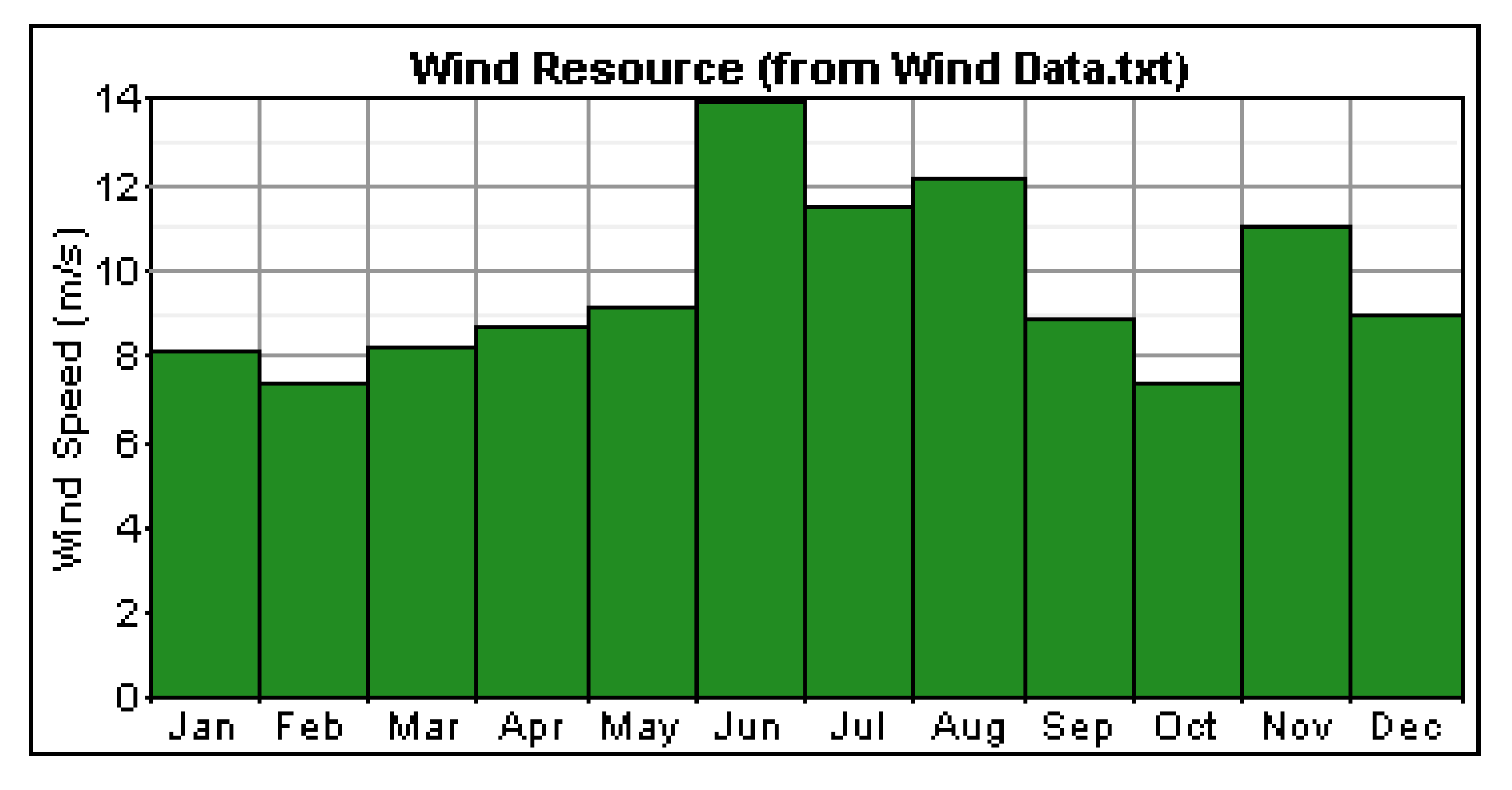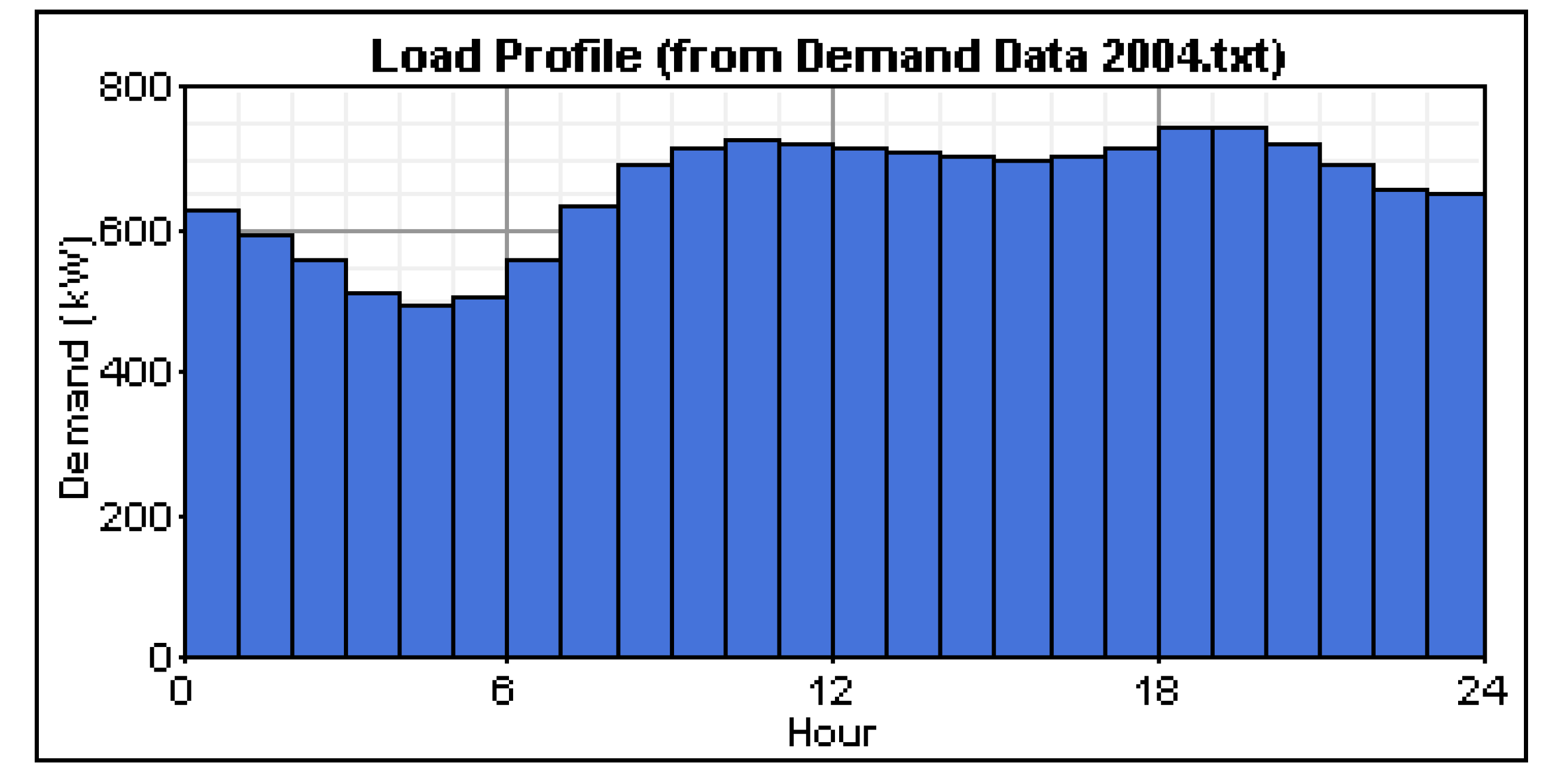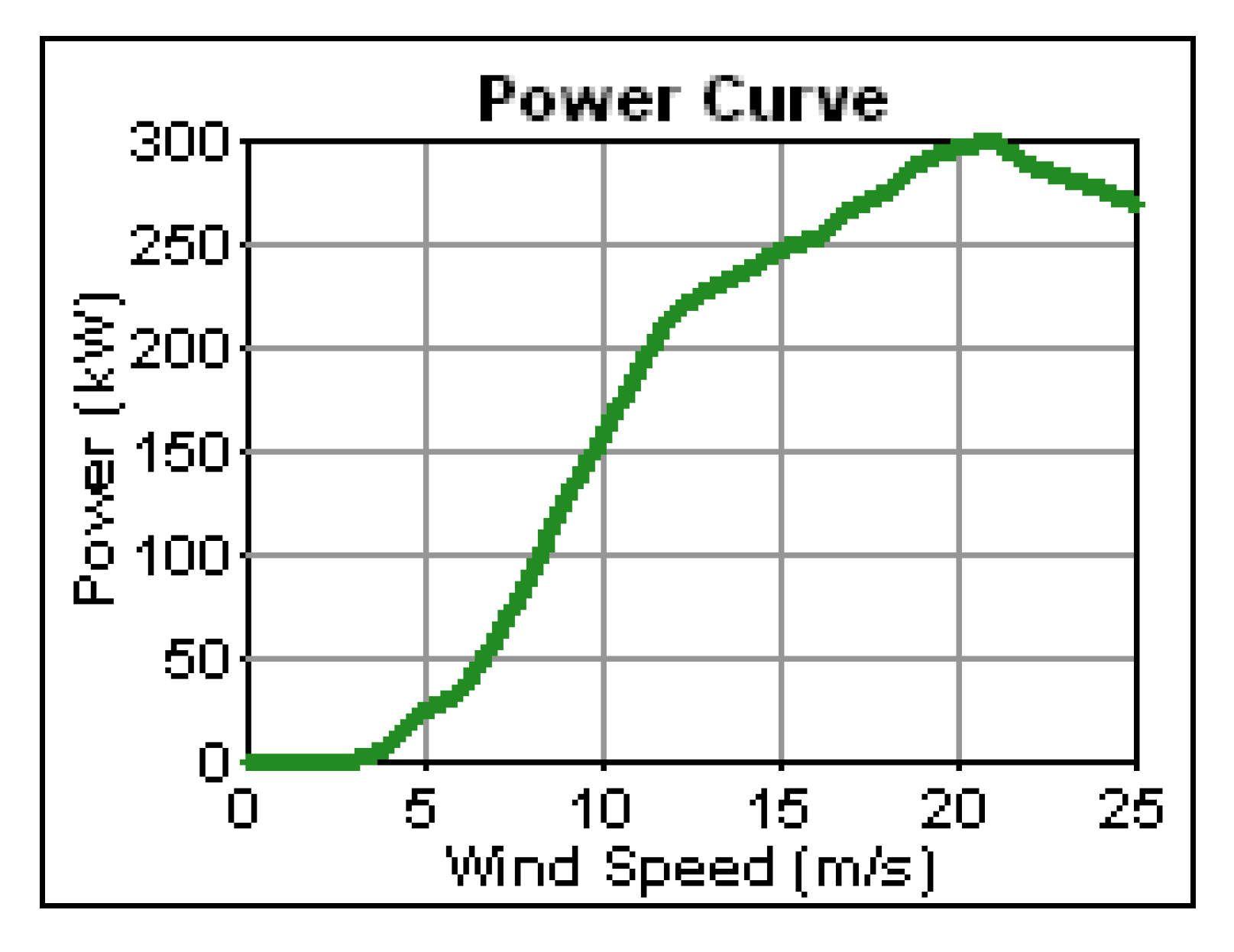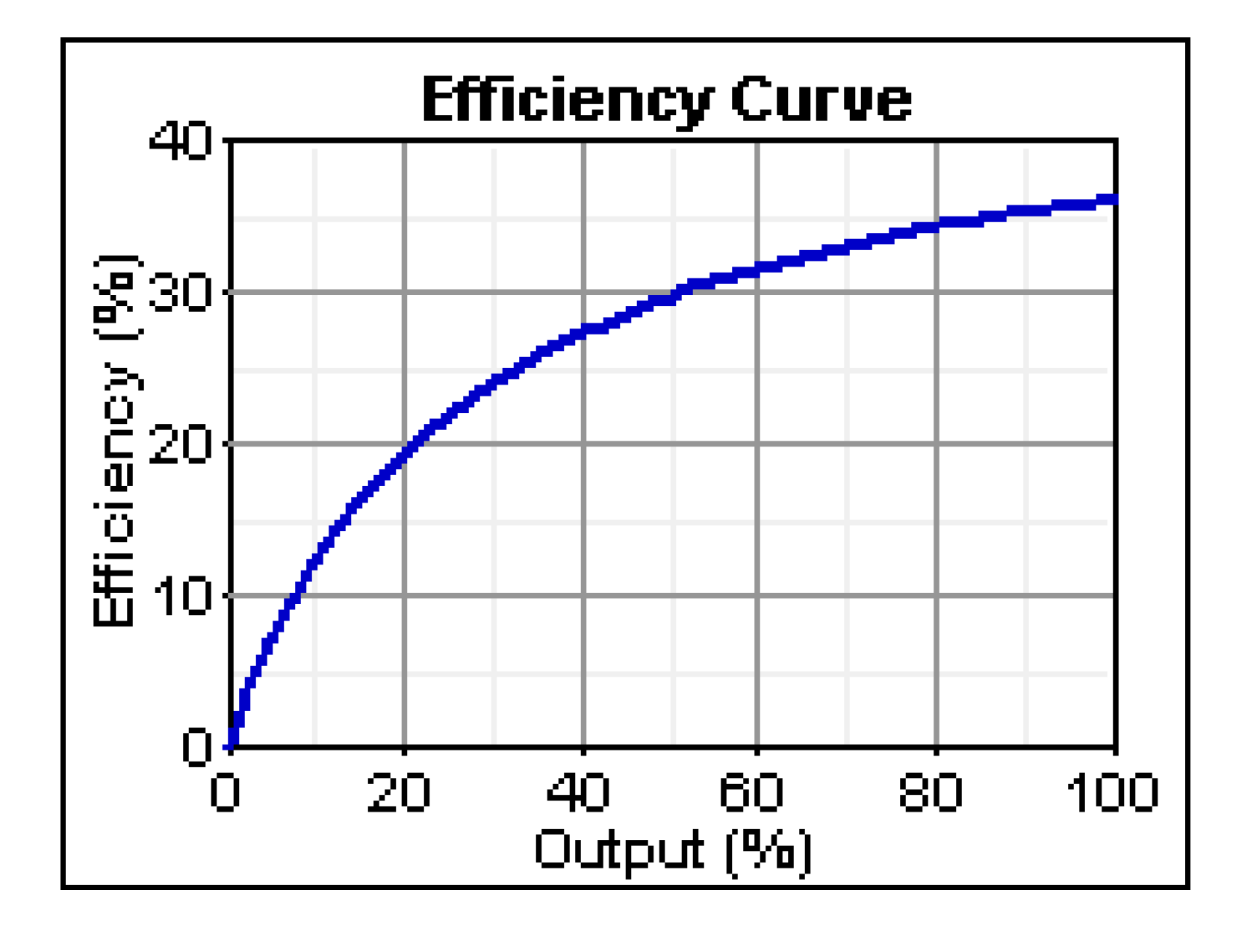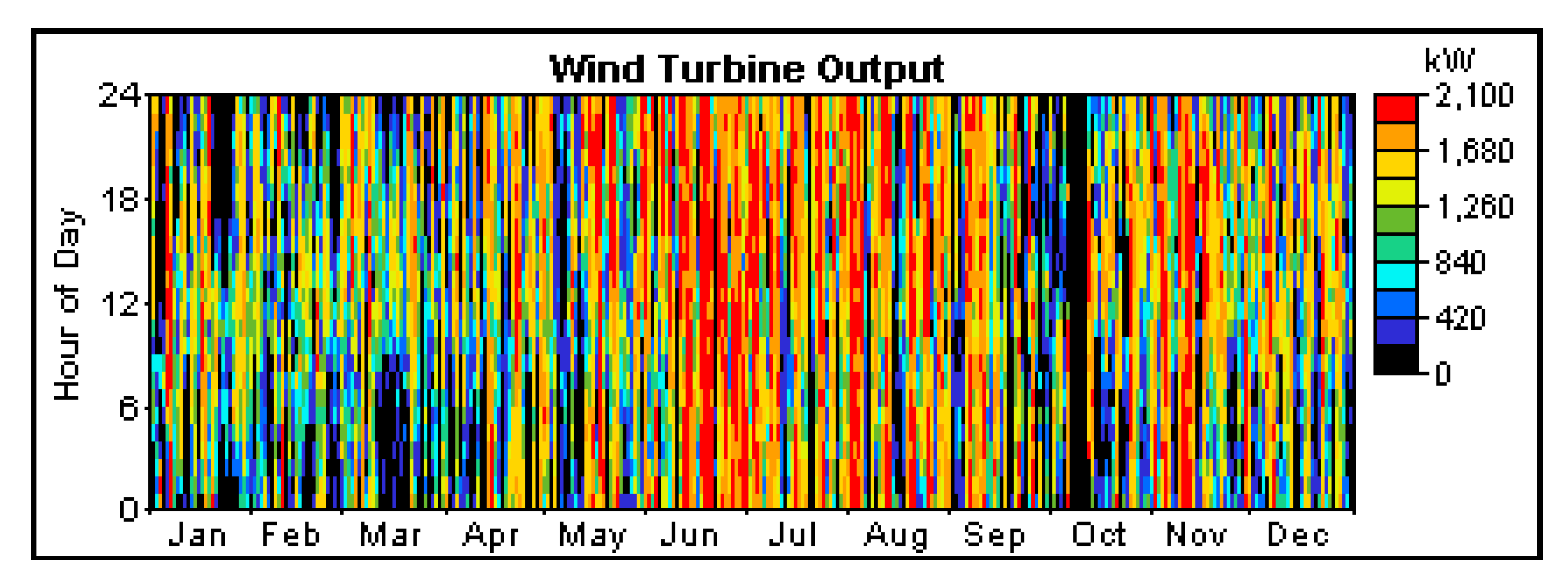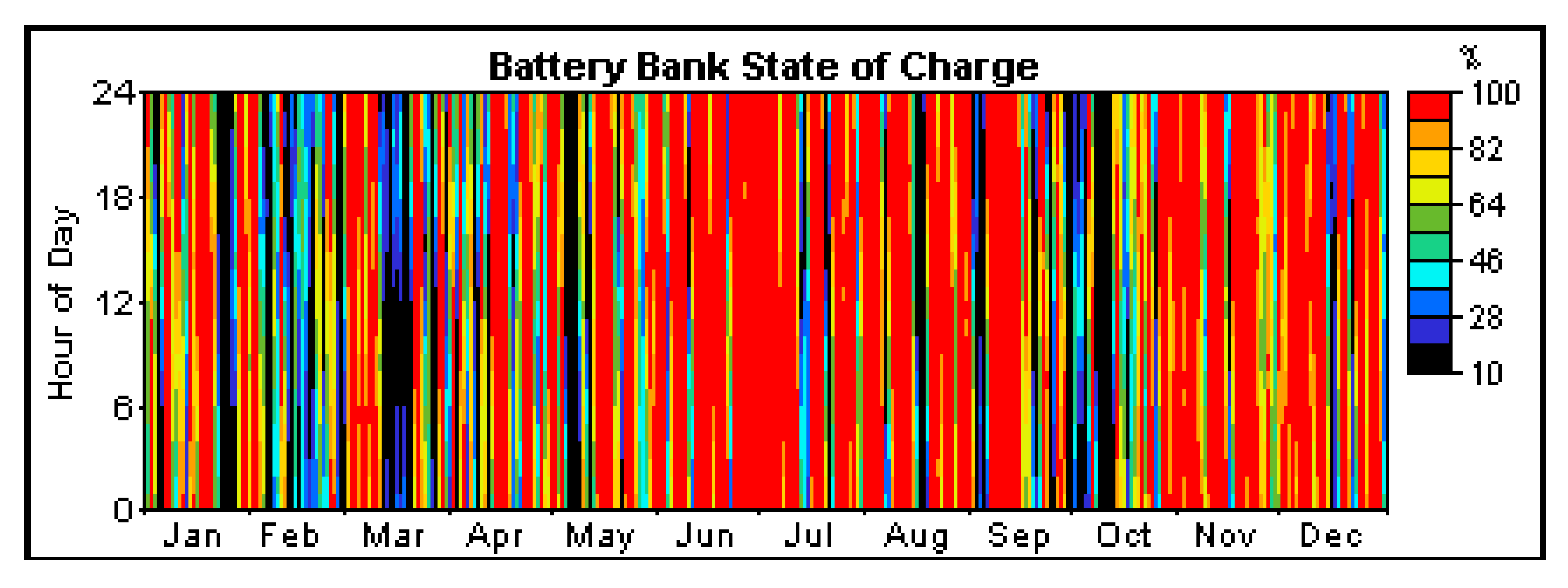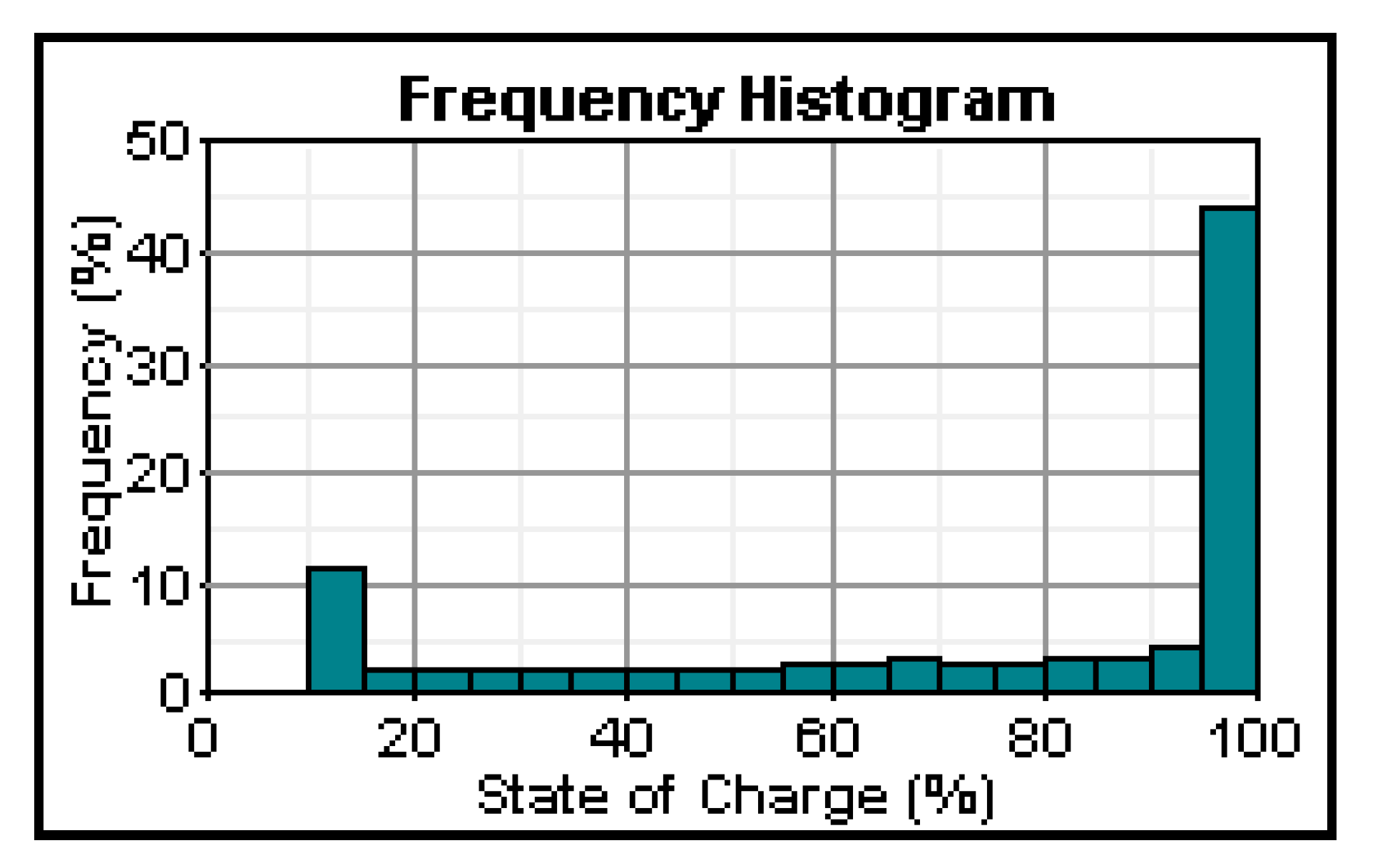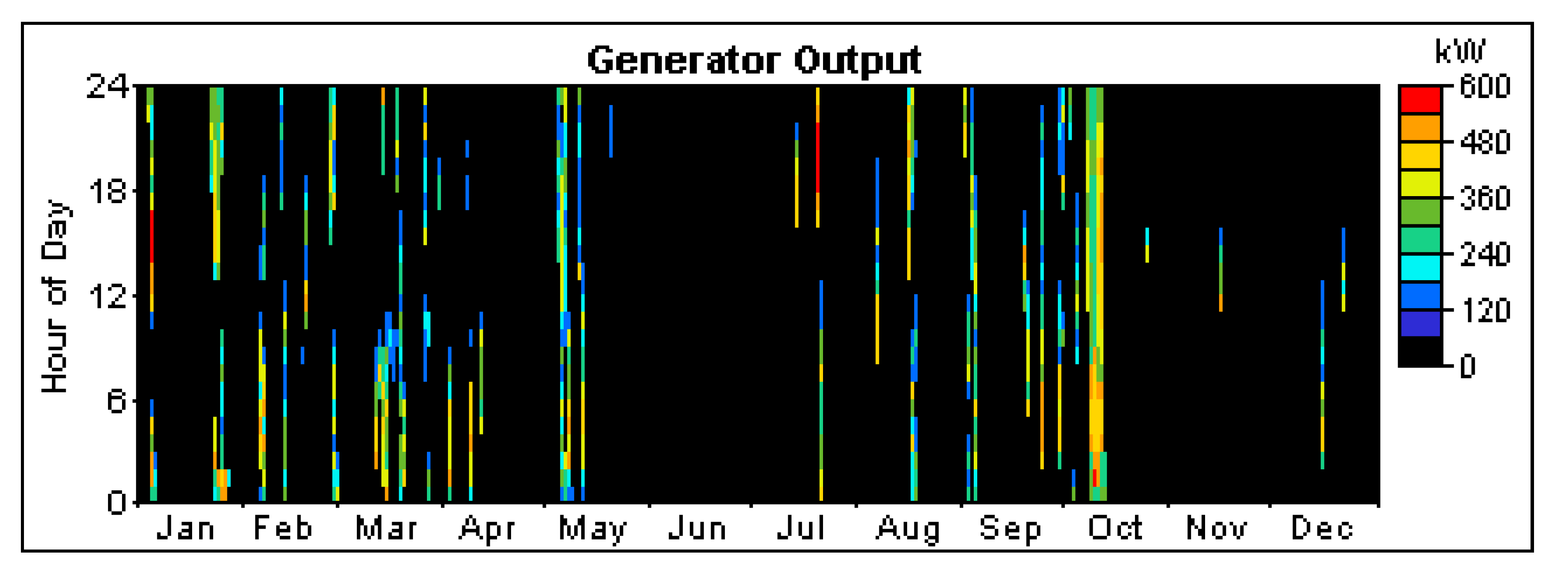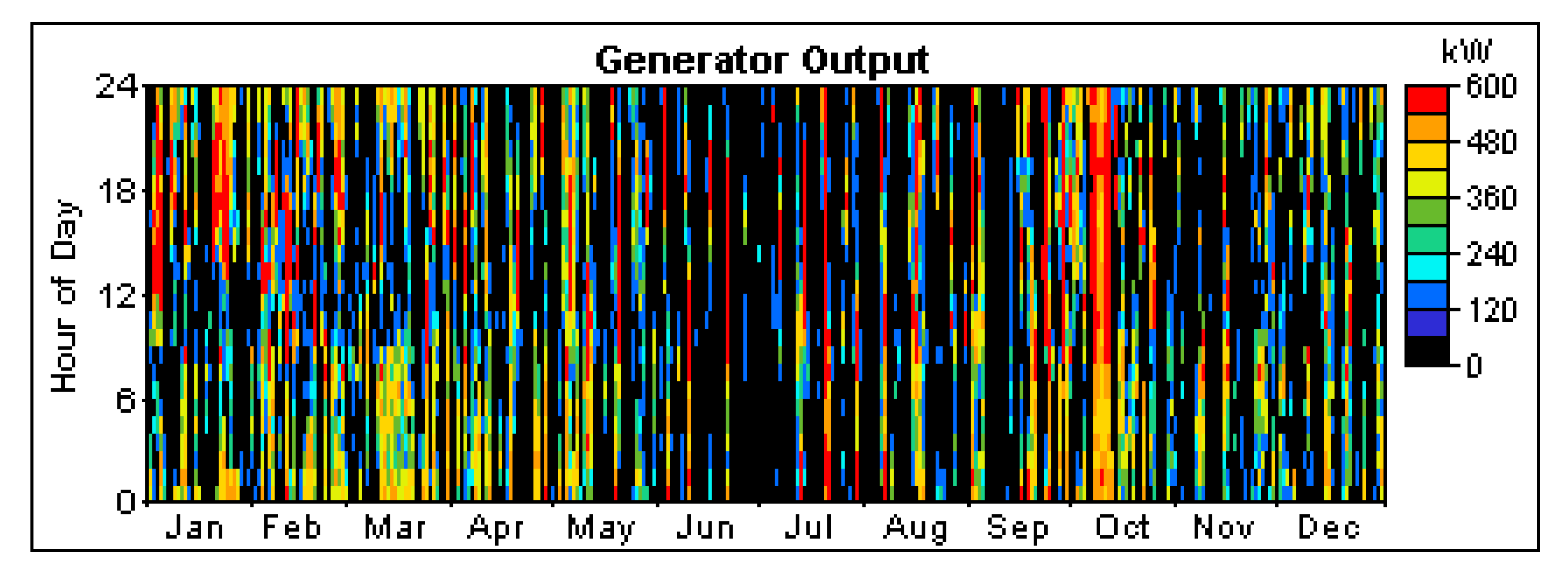1. Introduction
Wind turbines have already seen widespread use in both grid-connected and remote electricity generation. Large grid-connected wind farms are currently in operation and in development all over the world. The major economic and practical drawback of wind energy is its intermittent nature. Wind energy demands not only that the wind is blowing, but also depends on cut-in and cut out wind speeds—the wind speeds at which generation begins and is stopped to avoid damage respectively. Despite careful consideration given to site selection in order to ensure a relatively stable wind source and strength, the wind and its strength still cannot be guaranteed. This has a number of implications. Firstly, wind turbines have an average production of only about 33% [
1] of their rated power meaning wind farms need to be oversized in order to accommodate reduced wind speeds, greatly increasing capital costs. Secondly, wind power is afforded only limited grid penetration before grid instabilities can occur. At or below the limit of penetration a cut out in wind can be compensated for elsewhere on the grid, but above the limit of penetration the grid is too reliant on wind, so without some means of storage can be very vulnerable to power shortages. Thirdly, for non-grid connected systems, an additional power source such as a diesel generator or a means of storage is required.
Power generation systems in remote areas typically rely on diesel generators and as such are susceptible to the upward trend in the price of diesel. In order to overcome this, many remote communities are installing wind turbines to reduce their dependence on diesel. The use of an electrochemical energy storage system as an integration technology can potentially further increase the renewable penetration of these wind/diesel systems and in doing so offer long-term tangible monetary and environmental benefits.
There are several types of electrochemical energy storage technologies currently in existence, from lithium ion batteries to lead-acid batteries. Redox flow cells are another type of battery that exhibits excellent potential for use as energy storage devices due to a number of desirable properties. Redox flow cells employ a half-cell arrangement and utilise electrolytes with different electrochemical potential to store and discharge energy. Flow cells have significant benefits over other batteries including a long operating life, lower capital and operating costs and greater capacity due to the separation of energy and power rating.
The Vanadium Redox Battery (VRB) [
2,
3,
4,
5], pioneered at the University of New South Wales (UNSW) is proving to have the desired properties required for successful energy storage. Currently two types of VRB are in differing stages of development. The Generation 1 VRB, also referred to as the All-Vanadium Redox Flow Battery, employs a V
2+/V
3+ redox couple in the negative half-cell and a VO
2+/VO
2+ redox couple in the positive. In contrast, the Generation 2 VRB utilises Br
−/ClBr
2 or Cl
−/BrCl
2− and VBr
2/VBr
3 redox couples in the negative and positive half-cells respectively [
6,
7].
The distinguishing feature of both types of VRB over other flow cells is that the VRB employs a single vanadium electrolyte on both sides of the cell. This eliminates the problem of cross-contamination inherent in other types of redox flow batteries, gives an indefinite electrolyte life, reduces maintenance costs and results in excellent storage properties.
The Generation 1 VRB has already seen extensive field testing and demonstration in a range of energy storage applications, with several VRB wind storage systems currently installed in Japan and Australia. In 2003 a 200 kW/800 kWh VRB was installed on King Island, Australia to store energy for a wind diesel grid thereby reducing diesel fuel consumption on the island. In 2005, Sumitomo Electric Industries (SEI), Japan, installed a 4 MW/6 MWh VRB wind energy storage system on the Japanese island of Hokkaido, this being one of close to 20 VRB installations completed by SEI since 1997. Although a number of VRB systems are in operation for renewable energy storage around the world, however, little information has been published on the economics or greenhouse gas abatement potential of VRB integration into renewable energy systems. The economics and emissions savings that can be achieved are clearly linked to the local conditions of wind speed and wind variability, load profile, diesel fuel costs (for wind-diesel systems) as well as VRB system capital costs. While the capital costs of the existing VRB installations have been relatively high due to the low production capacity currently available, recent developments in low cost membranes and stack components by V-Fuel Pty Ltd in Australia, promise to allow significant cost reductions, allowing the necessary energy storage cost targets to be achieved in the short-term.
This study seeks to investigate the practical use of a VRB by way of computer modelling to analyse its effectiveness in terms of both cost and emissions savings in realistic remote wind/diesel power systems.
The HOMER Micropower Optimization Model developed by the US National Renewable Energy Laboratory was used to model the use of a VRB in typical remote wind/diesel systems.
2. The HOMER Micropower Optimization Model
2.1. About HOMER (Version 2.2 Beta) [8]
HOMER is a computer simulation program designed by the National Renewable Energy Laboratory (NREL) in the United States. Coined as the Optimisation Model for Distributed Power, HOMER allows the modelling of both grid and non-grid connected power systems consisting of conventional and renewable technologies. The program considers the economic and technical feasibility of desired power systems and delivers comprehensive reports covering a range of subjects from the net present capital cost of the system to the renewable penetration.
HOMER is a very sophisticated program having been constantly developed and updated since its beginnings in February 2000. Now in its sixth year, HOMER (Version 2.2 beta) is used by thousands around the world as the basis from which to begin designing simple power systems. It allows the input of renewable resources such as wind speeds, battery data, demand load data, capital and operation and maintenance (O&M) costs among others, as well as sensitivity analyses modelling the impact on the system to variations in any input.
2.2. Assumptions within HOMER
HOMER performs simulation calculations on an hourly basis, for each of the 8,760 h in a year. The calculations are based on energy balances and compare the thermal and electrical energy both provided and demanded by the system. Based on these calculations, HOMER determines the optimum system configuration as well as an analysis of the system cost. For systems that include batteries and/or fuel powered generators, HOMER determines for each hour whether to charge or discharge batteries and whether to run the generator.
The most significant assumption made by HOMER relates to the round trip efficiency. The round trip efficiency of the battery is assumed to be constant over the load and power range and over the lifetime of the battery. In reality, the round trip efficiency (energy efficiency) of the cell will vary depending on the power drawn from the battery and the surrounding temperature, among other factors. Other assumed constants include the nominal voltage, the capacity curve, the lifetime curve and the minimum state of charge of the battery [
9].
In calculating the total net present costs and annualised costs of the system, HOMER assumes a project lifetime of 25 years with an interest rate of 6% per annum.
For more detailed information on assumptions and algorithms within HOMER see the article entitled
Micropower System Modelling with HOMER by Lambert
et al. [
9].
